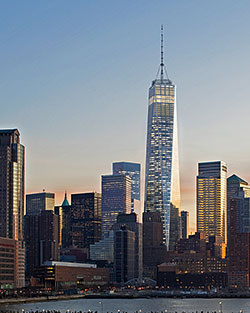Recipe for regional flavour

Roula Khalaf, Editor of the FT, selects her favourite stories in this weekly newsletter.
Strong business links to new markets worldwide and growing global demand for unique buildings and physical environments mean that 21st-century building designers need to be ‘multilingual’ in their approach to creating meaningful and memorable solutions.
When working around the world for international clients on diverse projects, agility is crucial. A successful designer in the global workplace has to be adaptable, flexible and willing to work in new ways. Being open-minded and able to observe the world carefully to draw from local diversity are essential as these can become the essential elements of a project’s particular design “language”. Each project has its own story, including the characters and circumstances that have enabled them to be realised. And while it is often hard to look back and generalise, common and contrasting themes prevalent in global design work, there are certain universal strands.
Variations between international regions: Differing geographies mean different cultural traditions and tastes. This applies to local languages, regional cuisine and historic architectural styles. It also applies to contemporary design challenges. When working for clients in locations throughout the world, inherent differences become apparent.
Understanding the complexities of large-scale projects: As technology has advanced, so has our ability to solve complex problems in the built environment. While significant projects are under way in some of the most remote and underprovided cities in the world, the most complex are being delivered by a small percentage of high-end clients. The learning curve is steep in many regions to deliver projects of exceptional scale and mixed-use complexity.
Being able to define the project brief: Many clients know exactly what they want, particularly in mature markets in which office tenants or residential buyers expect a certain level of quality. However, in other places clients lack experience in developing a proper project brief, requiring the designer to help illustrate options and alternative synergies to extract the project’s goals and aspirations from the client.
A desire for a strong “image”: In more established markets, quality is not necessarily tied to the exterior shape or image of a building. But in places where wealth is new and an insatiable desire to make a mark is inherent, clients often demand more from the building’s expression on the skyline, or within its urban context.

Aesthetic tastes: Regional tastes can be as diverse as the populations within them. These tastes can drive not only a building’s third-dimensional form but also colour, materiality and even its viability as an efficient development model.
Delivery of quality infrastructure, urban environments and the built environment: With the world rapidly urbanising, people’s understanding of the critical solutions to create more liveable city environments varies enormously. In many regions, a car-dominated society prevails, leading to a certain suburbanism and an often anti-human built form. In other places, the character and quality of city infrastructure is so paramount that a building’s design must adapt to, engage with and enhance its local urban context – or the project will fail.
Common themes regardless of local/regional desires: In many cases, the challenges designers face in day-to-day work are exactly the same, regardless of the project’s location on a map.
Demanding clients and expected turnround time: No matter where the work is internationally, clients have become very demanding, and information technology feeds the frenzy and high expectations of quick turnround time. This is a challenge in the design process in which ideas need time to develop and mature.

The need for face-to-face interaction: While global communication is advancing by the nanosecond through online web-sessions and instant messaging, there is nothing like real-time interaction with clients. This remains the best form of dialogue, regardless of where a project is located, but perhaps even more essential where language barriers make it difficult to speak through a webcam.
Engagement with the local community: Many international projects are driven and won via design competitions. The best projects are delivered when the end user and local community are directly engaged and involved in the process, irrespective of location and cultural biases.
The need for a local partner: A critical component in delivering large-scale complex projects worldwide is to develop ties to the place where it is located. This can be a local architect partner, a government agency facilitator, or someone on the client side locally that the designer can connect with to ensure the core idea of a project resonates.
It is not always about the end product; it is also about the people you meet and work for. Developing the relationships with all the stakeholders – client, community, developers – involved in the project is critical.
——————————————-
Daniel Ringelstein is director of Skidmore, Owings & Merrill, the architecture, interior design, engineering and urban planning firm
Comments